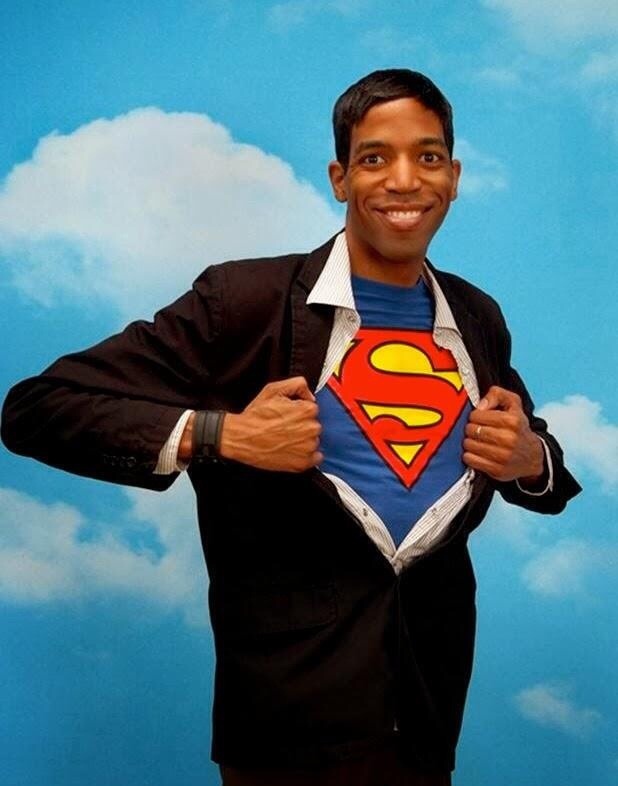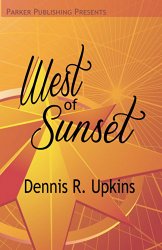Today’s guest voice is Michael Williams of Seventh Star Press, one of our partners here at Literary Underworld. Over the past 25 years, Michael Williams has written a number of strange novels, from the early “Weasel’s Luck” and “Galen Beknighted” in the best-selling DRAGONLANCE series to the more recent lyrical and experimental “Arcady,” singled out for praise by Locus and Asimov’s magazines.
Williams’ highly anticipated City Quartet was completed by the publication of Tattered Men in October 2019. The four volumes may be read in any order–four stories that intertwine, centered in the same city, where minor characters in one novel become central in another:
- “Vine: An Urban Legend” is the story of an amateur stage production In Louisville’s Central Park, gone darkly and divinely wrong.
- “Dominic’s Ghosts” takes up the story of a son in search of his father in the midst of a murky conspiracy involving a suspicious scholar, a Himalayan legend, and subliminal clues from a silent film festival.
- “Tattered Men” is the account of a disheveled biographer, writing the life story of a homeless man who may have been more than he ever seemed.
- And “Trajan’s Arch” is a coming-of-age story replete with ghosts, a testimony to hauntings both natural and supernatural.
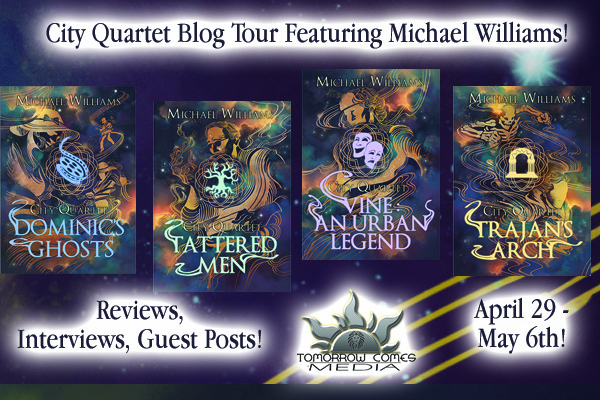
Bringing the stories together
It’s no great wisdom to say that setting is character. Most writers know this implicitly, especially if you’re writing fiction that resides in alternate, changed, or parallel worlds. Tolkien’s Middle Earth is as much an actor in the epic story as Frodo or Gandalf: it shapes events, uncovers mysteries, guides possibilities. The same for Martin’s Westeros, Le Guin’s Earthsea, Ray Bradbury’s Mars.
But also Garcia Marquez’s Macondo, Lawrence Durrell’s Alexandria, William Faulkner’s Yoknapatawpha County. Place is a factor not only in speculative fiction, but in many of the other stories that shape our reading.
I’ve been asked to comment on how my City Quartet is put together, how it addresses the primary task of writing interrelated novels that stand alone—an odd tactic in a publishing industry that is fond of the series. Because the City Quartet is by no means a series: instead it is an arrangement of books, a world of four worlds that the reader can enter from any of its four volumes, can read in any order. I like to think that in some ways it is like a musical quartet, in which four parts commingle and interweave, forming a work that is larger than the sum of its components.
And it starts with setting.
The City Quartet takes place in a modern Midwestern city that is and is not my native Louisville. Composed of the streets and neighborhoods, the suburbs and the sites that would be recognizable to any native or visitor, the fictional city is nonetheless a bending of the actual one, layered in time and in alternative versions, but ultimately anchored in the very real city I remember, work in, and visit. And as every city has its lore, from history to urban legend, so does mine, and it intersects with that of the actual Louisville, draws from the stories I heard in childhood and read about in newspapers and local chronicles; nevertheless, a lot of my city is invented, made up by and around the characters I put in the books.
Each of the books is a self-contained novel. Each has a narrative arc that I hope is successful. Whether you read Trajan’s Arch or Tattered Men, Dominic’s Ghosts or Vine: An Urban Legend, you get a beginning, middle, and end to a story; you have characters who change and grow because of what happens to them; I hope you turn the pages eager to find out what those changes are.
You get that if you read only one of the novels.
If you read a second, and a third or fourth, you get the design and pattern and weaving of the books. Primary characters in one book appear in secondary roles in another, perhaps about the business of one of the stories you are not reading at the time, glimpsed in an excerpt or a cameo. Or perhaps they’re on an adventure only implied in a third book, or you see the same scene from a different point of view: an encounter you saw in Trajan’s Arch you will see again in Dominic’s Ghosts, but from a different point of view, so that it feels differently and means a different thing, and the meaning of that encounter complicates and deepens.
But if you see the encounter only once, only in one book, it should still make sense. You should understand it in terms of one version without needing to refer to another novel to find out what the hell is going on. The novels relate to each other more than they depend on each other: their connection is more textural and musical than linear and causal.
So you can enjoy each by itself; taken together, however, you get more of the jokes, see more connections, and slowly come to the conclusion, I hope, that our stories, like ourselves, are part of each other.
Follow the rest of Williams’ blog tour through Tomorrow Comes Media!
Dominic’s Ghosts
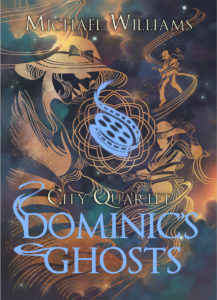
Dominic’s Ghosts is a mythic novel set in the contemporary Midwest. Returning to the hometown of his missing father on a search for his own origins, Dominic Rackett is swept up in a murky conspiracy involving a suspicious scholar, a Himalayan legend, and subliminal clues from a silent film festival. As those around him fall prey to rising fear and shrill fanaticism, he follows the branching trails of cinema monsters and figures from a very real past, as phantoms invade the streets of his once-familiar city and one of them, glimpsed in distorted shadows of alleys and urban parks, begins to look uncannily familiar.
Vine: An Urban Legend
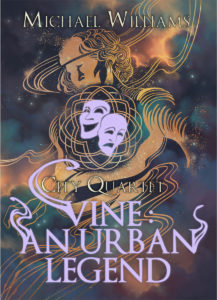
Amateur theatre director Stephen Thorne plots a sensational production of a Greek tragedy in order to ruffle feathers in the small city where he lives. Accompanied by an eccentric and fly-by-night cast and crew, he prepares for opening night, unaware that as he unleashes the play, he has drawn the attention of ancient and powerful forces.
Michael Williams’ VINE: AN URBAN LEGEND weds Greek Tragedy and urban legend with dangerous intoxication, as the drama rushes to its dark and inevitable conclusion.
Trajan’s Arch
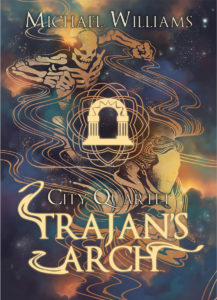
Gabriel Rackett stands at the threshold of middle age. He lives north of Chicago and teaches at a small community college. He has written one novel and has no prospects of writing another, his powers stagnated by drink and loss. Into his possession comes a manuscript, written by a childhood friend and neighbor, which ignites his memory and takes him back to his mysterious mentor and the ghosts that haunted his own coming of age. Now, at the ebb of his resources, Gabriel returns to his old haunts through a series of fantastic stories spilling dangerously off the page–tales that will preoccupy and pursue him back to their dark and secret sources.
Tattered Men
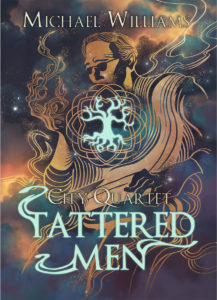
When a body washes ashore downstream from the city, the discovery saddens the small neighborhood south of Broadway. A homeless man, T. Tommy Briscoe, whose life had intertwined with a bookstore, a bar, and the city’s outdoor theater had touched many lives at an angle. One was that of Mickey Walsh, a fly-by-night academic and historian, who becomes fascinated with the circumstances surrounding the drowning.
From the beginning there seems to be foul play regarding Briscoe’s death, and, goaded on by his own curiosity and the urging of two old friends, Walsh begins to examine the case when the police give it up. His journey will take him into the long biography of a man who might have turned out otherwise and glorious, but instead fell into and through the underside of history, finding harsh magic and an even harsher world. Despite the story of Tommy’s sad and shortened life, Walsh begins to discover curious patterns, ancient and mythic, in its events—patterns that lead him to secrets surrounding the life and death of Tommy Briscoe and reveal his own mysteries in the searching.


